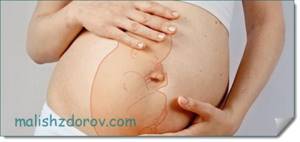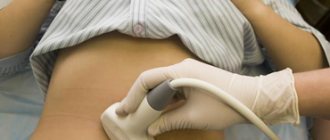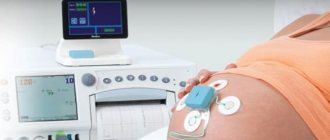Among the important studies in the third trimester of pregnancy, cardiotocography (CTG) occupies a special place. This type of diagnosis allows you to comprehensively assess the intrauterine condition of the fetus and make sure that the child does not suffer from oxygen starvation. This study is especially relevant in preparation for childbirth, as well as in the process of childbirth itself. This procedure is harmless for both the woman and the baby.
Cardiotocography allows you to obtain data on the work of the fetal heart against the background of its motor activity and reaction to uterine contractions. CTG is usually performed in conjunction with ultrasound and Doppler ultrasound. Although this procedure is not difficult, proper preparation for CTG during pregnancy will not be superfluous.
What affects the frequency of movements?
It is important to understand that the activity of the child in the womb depends on various factors. A pregnant woman usually begins to feel the first tremors at 16-18 weeks. In addition, reviews from mothers indicate that each baby has its own style of movement. Experts suggest that this depends on the temperament of the baby, which is being formed in the womb.
It is also worth noting that the number and intensity of movements often depends on the lifestyle of the woman herself. So, let's name the main factors that can affect the activity of the fetus:
- A pregnant woman is in a hot and stuffy room.
- Mommy feels nauseous and dizzy. Movements may become more active due to disruption of the flow of oxygen to the placenta.
- The position of the woman's body can affect the baby's movements. If the position is uncomfortable for the little one, he will remind himself by pushing his arms and legs.
- Loud noises can affect a child's activity. In this case, one baby may calm down, while the other, on the contrary, will begin to actively push.
- The movements may increase if the mother is lying on her stomach. This position leads to compression of the vena cava located in the pelvic area. Due to compression, oxygen may not reach the child well, which will lead to active movements.
- Many babies also begin to push if mommy ate something spicy, sour, or drank a drink containing a lot of caffeine.
It is worth noting that sudden and active movements of the baby indicate that he is experiencing discomfort or lack of oxygen. Smooth and slow movements are an indicator that the baby is doing well.
Is it possible to determine the position of the fetus in the womb by its movements?
Some mothers wonder whether it is possible to understand how the baby lies in the stomach by its movements? Yes, by assessing the baby's movements, it is possible to guess his position. With a cephalic presentation, the kicks will be more pronounced in the upper part of the tummy, while with a pelvic position of the baby, the kicks will be felt more in the lower tummy. It is important to understand that during the entire pregnancy the baby turns over in the womb several times.

If mommy feels that the little one is lying head up, there is no need to panic. Most likely, closer to childbirth, he will roll over into the correct position.
How to wake up a child before CTG
How to wake up a child before CTG? Today I did it, they write that there is a sharp deterioration in the condition of the fetus... G says he may have been sleeping, but he was really moving sluggishly... They made another appointment for a CTG tomorrow at 8 am, now I’m worried all day long...
Girls, good afternoon everyone. I'm going for my first CT scan on Friday. How to prepare? CTG is an auxiliary method. CTG again - this was already the fifth half hour of the study, and they showed excellent results. Although this procedure does not present any difficulty, proper preparation for CTG during pregnancy will not be superfluous. However, remember that CTG does not make a diagnosis. Six pregnant ladies with a period from 31 to 39 weeks sat and tried in vain to wake up their bellies)))))) But apparently the weather and the relaxed atmosphere in the CTG room had a beneficial effect on the babies' sleep.
CTG results alone are not enough to make a diagnosis. Data obtained from cardiotocography serve as auxiliary information and additional tests and examinations are required to verify pathological disorders.
I'm about to have a CTG scan and I'm looking forward to it with horror.








